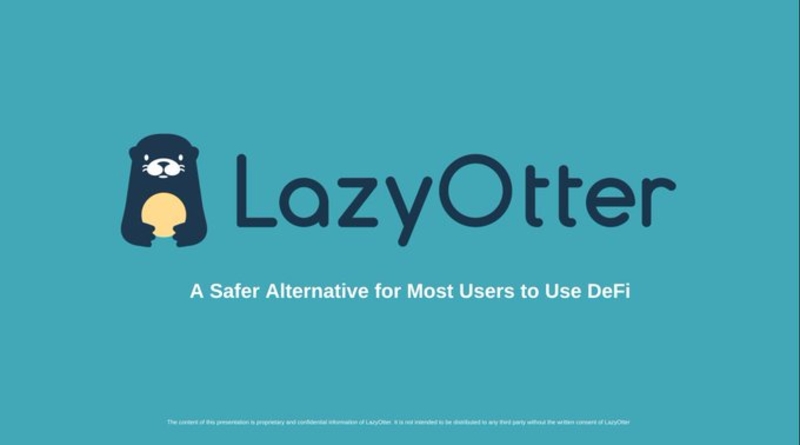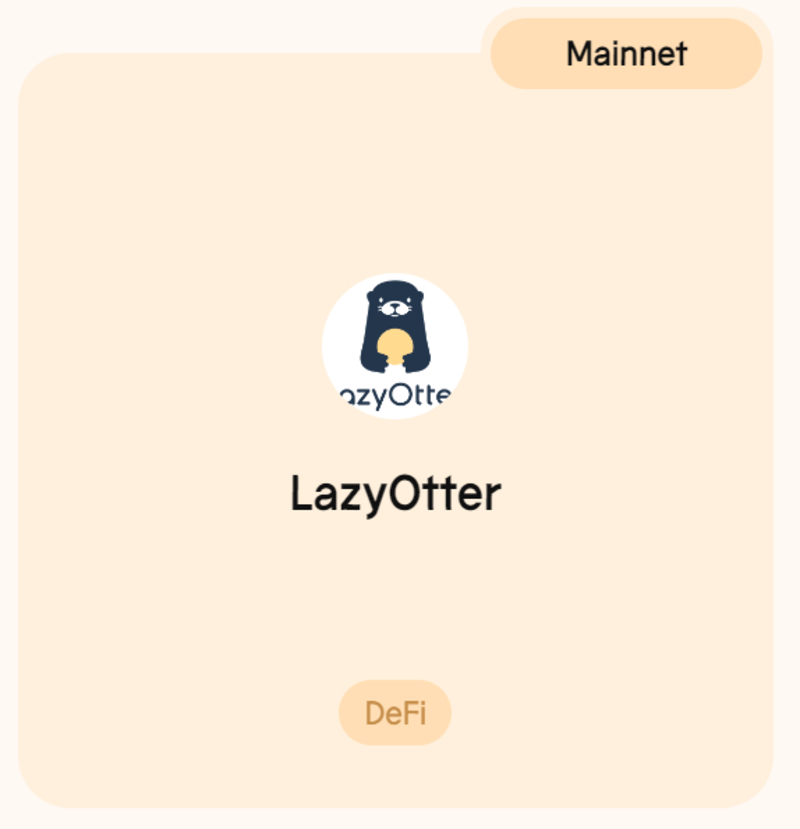Curious about what is LazyOtter and why it’s gaining attention in the DeFi space? Dive into this detailed article to discover everything you need to know about its features, tokenomics, and upcoming developments. Don’t miss out on key insights!
What is LazyOtter?
LazyOtter is a Scroll-native decentralized finance (DeFi) protocol designed to offer users opportunities in yield farming and liquidity provisioning. In the crowded world of DeFi, LazyOtter sets itself apart by focusing on ease of use and a gamified experience. With a playful otter theme, it integrates elements of NFTs (Non-Fungible Tokens) that engage users beyond the standard financial returns, giving it a unique flavor in the ecosystem. But what makes LazyOtter worth your attention? It’s not just the theme — it’s the platform’s ability to generate real yield while providing a simplified interface, making it accessible to DeFi novices and experienced users alike.
LazyOtter’s key value lies in its mission to simplify decentralized finance, focusing on user experience without sacrificing the high returns that DeFi users expect. Built on the Scroll network, a Layer 2 solution for Ethereum, LazyOtter ensures fast and cheap transactions, which are critical for users engaging in frequent yield farming or staking activities. With its unique positioning in DeFi, LazyOtter stands to gain significant traction in the coming months.
How does LazyOtter work?
LazyOtter operates using smart contracts, which are self-executing programs on the blockchain. The main functionalities offered by LazyOtter include yield farming, staking, and liquidity pools. Each function serves a distinct purpose and comes with specific benefits for users.
- Yield farming: Yield farming on LazyOtter involves depositing your crypto assets into liquidity pools, where they earn interest or rewards over time. LazyOtter aims to provide competitive returns by aggregating liquidity from various pools, maximizing users’ potential profits.
- Liquidity pools: Liquidity pools allow users to provide their assets to facilitate trading on the platform. In return, they earn a share of the fees generated by trades. LazyOtter offers a variety of pools for different cryptocurrencies, catering to both conservative and high-risk investors.
- NFT integration: LazyOtter offers users unique, otter-themed NFTs as rewards for participating in the ecosystem. These NFTs serve not only as collectibles but also provide added bonuses, such as boosting your yield or offering access to exclusive features within the platform.
LazyOtter’s seamless integration into the Scroll network ensures that transactions are fast, secure, and cost-effective. It aims to take the complexity out of DeFi, ensuring that users can earn returns without the need to constantly monitor the market.
LazyOtter tokenomics
The LazyOtter protocol uses its own native tokens for governance, staking, and rewards. Tokenomics, or the economics of the token, play a critical role in any DeFi project, and LazyOtter is no exception. Here’s a breakdown of LazyOtter’s token system:
- Total supply: The total supply of LazyOtter tokens is capped, ensuring that inflation does not diminish the value of the tokens over time. The fixed supply also makes the tokens scarce, which can potentially increase their value as demand grows.
- Distribution: The tokens are distributed through a variety of methods. A significant portion is reserved for liquidity providers, stakers, and yield farmers. Another portion is allocated to governance, allowing users to vote on changes or improvements to the protocol.
- Utility: LazyOtter tokens have multiple uses within the platform. Users can stake tokens to earn more rewards, vote on governance decisions, or even trade them on decentralized exchanges. The token also plays a role in NFT rewards, as some NFTs can only be purchased or unlocked using LazyOtter tokens.
The tokenomics of LazyOtter are designed to promote long-term growth, ensuring that users are incentivized to stay within the ecosystem. By offering a capped supply and multiple utility options, the tokens provide real value to users participating in the LazyOtter platform.
LazyOtter Roadmap: What’s Next?
LazyOtter has an ambitious roadmap that outlines its future developments. Understanding this roadmap is crucial for users looking to maximize their involvement in the protocol. Here’s what’s coming next for LazyOtter:
- New features: LazyOtter plans to introduce more yield farming strategies and liquidity pool options. The platform is also exploring additional DeFi products such as lending and borrowing, giving users more ways to interact with the protocol and generate returns.
- Partnerships: LazyOtter is in talks with other DeFi protocols to create cross-platform collaborations, which could introduce new earning opportunities for users. These partnerships are key to expanding the utility of LazyOtter and integrating it into the broader DeFi ecosystem.
- Expansion into multi-chain: While currently built on the Scroll network, LazyOtter has plans to expand into other blockchain ecosystems. This would allow users from different chains to participate in the protocol without needing to migrate their assets.
- Community growth: LazyOtter places a strong emphasis on building a robust and engaged community. Future initiatives include NFT giveaways, governance votes on the platform’s future, and educational content to help users better understand DeFi.
By following the roadmap, users can stay updated on new earning opportunities and strategic partnerships that will shape the future of LazyOtter. For anyone already invested, this roadmap provides a clear trajectory for the project’s growth and potential.
How LazyOtter compares to other DeFi projects
In the DeFi landscape, there are many competitors, so how does LazyOtter compare? When evaluating DeFi projects, we must consider key factors such as user experience, fees, functionality, and potential returns.
- Yearn finance: Yearn Finance is one of the largest yield aggregators in DeFi. While both Yearn and LazyOtter focus on yield optimization, LazyOtter stands out due to its gamified user experience and the inclusion of NFTs. Additionally, LazyOtter’s integration into the Scroll network provides lower fees and faster transaction times compared to Yearn, which still operates primarily on Ethereum’s mainnet.
- Curve finance: Curve Finance focuses on providing low-fee swaps for stablecoins. While it’s excellent for stablecoin liquidity providers, Curve lacks the gamified experience that LazyOtter offers. Users seeking a more interactive platform with additional NFT rewards may prefer LazyOtter.
- SushiSwap: SushiSwap is a decentralized exchange that also offers yield farming and staking. While SushiSwap has a broader reach in terms of supported assets and networks, LazyOtter’s user-friendly design makes it a more accessible option for DeFi newcomers. Additionally, SushiSwap does not currently integrate NFTs into its ecosystem.
LazyOtter’s ability to differentiate itself from these major players lies in its focus on simplicity, low fees, and the added gamification of DeFi with NFTs. For users looking for a more engaging DeFi experience, LazyOtter may be the right choice.
How to hunt for LazyOtter airdrops
The LazyOtter project is currently in its alpha stage, giving early users a chance to participate in exclusive opportunities. The platform has developed two Aave risk-layered vaults: one for USDC and one for ETH. These vaults allow users to deposit assets and earn returns based on their risk preference. A full launch on the Scroll network is expected in Q3 2024, which will expand the range of vaults available on the platform.
Step-by-step guide to participating:
- Access the app: To get started, head to LazyOtter’s app and connect your wallet. Ensure you’ve switched the network to Scroll, the Layer 2 scaling solution that LazyOtter is built on.
- Fund your wallet: You’ll need ETH or USDC in your wallet to make a deposit. These assets are required to interact with the AAVE USDC and AAVE ETH vaults.
- Deposit funds: Navigate to the “Vault” page in the app. Choose either the AAVE USDC or AAVE ETH vault, input your desired deposit amount, and confirm the transaction by signing it with your wallet.
- Earn rewards: By depositing into these vaults, users start earning rewards in the form of Otter points. For each $1 deposited, you’ll receive 1 Otter point per day. These points are crucial as they may play a role in future token distributions once the platform fully launches.
- Referral program: If you want to maximize your points, consider using LazyOtter’s referral program. Invite friends using a unique referral link, and you’ll earn a 20% bonus on the points they accumulate.
- Testnet interaction: To boost your involvement, interact with LazyOtter’s testnet features and provide feedback through their Discord channel. Active community participation could also play a role in future rewards.
- Keep your deposits active: The longer your assets remain in the vaults, the more points you’ll accumulate. LazyOtter may introduce new vaults with additional bonuses for those who diversify their deposits across multiple vaults.
Potential for future airdrops
While early users may speculate on receiving a future airdrop, it’s essential to note that there’s no guarantee. LazyOtter’s roadmap includes a token generation event expected in Q4 2024 (or possibly beyond). If an airdrop occurs, being an early participant in the vaults or actively engaging with the platform may increase your chances of receiving tokens. Additionally, users who participate in Scroll’s underlying protocols could also earn Scroll Marks, which might serve as another layer of rewards.
However, all of this remains speculative, and it’s crucial to keep that in mind. Participating in LazyOtter during its alpha phase could offer potential rewards down the line, but there is no official confirmation of an airdrop for early users. Stay tuned to LazyOtter’s announcements to remain informed on any updates.






